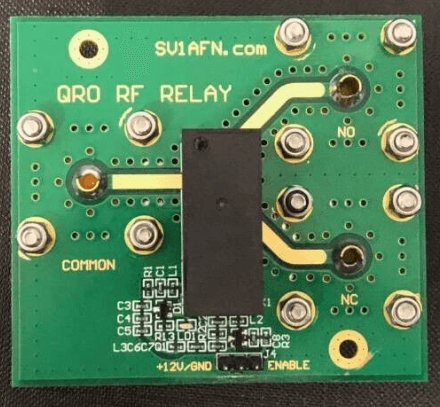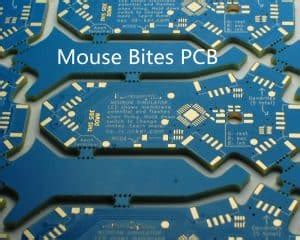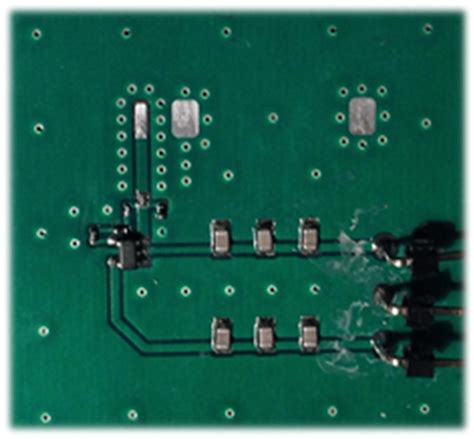Unlocking Efficiency: The Future of Contract Manufacturing in Electronics
Key Takeaways
The contract manufacturing landscape in the electronics sector has rapidly evolved, particularly in the domain of electronic assembly. This transformation is largely driven by the need for companies to enhance operational efficiency while maintaining high standards of quality and innovation. A significant development has been the specialization in pcb assembly, where the precision of printed circuit boards is critical for various electronic applications. Embracing advanced technologies such as automation and robust data analytics allows manufacturers to streamline processes, ensuring that pcba (printed circuit board assembly) is carried out with minimal waste and maximum effectiveness. Furthermore, effective partnerships across the supply chain play a vital role in achieving these efficiencies. By collaborating closely with component suppliers and logistics providers, contract manufacturers can respond more adeptly to market demands while mitigating risks associated with inventory management. In summary, as the industry pushes toward sustainable growth, the focus will remain on integrating innovative strategies that promote not only cost reduction but also environmental responsibility within electronic assembly processes.
The Rise of Contract Manufacturing in Electronics
The demand for contract manufacturing in the electronics sector has surged significantly in recent years, driven by the need for efficiency and cost-effectiveness. As companies seek to focus on their core competencies, many have turned to specialized manufacturers to handle complex tasks such as pcb assembly and pcba. This shift enables businesses to leverage the expertise of contract manufacturers, which offer innovative solutions and scalable production capabilities.
Furthermore, the increasing complexity of electronic devices necessitates a more sophisticated approach to assembly, where expertise in processes like electronic assembly becomes crucial. By automating aspects of production and utilizing advanced technologies, companies can enhance output while maintaining high quality standards.
“The key to thriving in today’s competitive market lies not just in producing quality electronics but also in optimizing every stage of manufacturing,” notes an industry expert.
As sustainability emerges as a critical focus for organizations globally, contract manufacturers are also adapting by incorporating eco-friendly practices into their operations. This evolution not only helps reduce manufacturing costs but also aligns with growing consumer preferences for sustainable products. Ultimately, the rise of contract manufacturing marks a transformative shift in the electronics industry, paving the way for greater innovation and collaboration among stakeholders.

Key Innovations in Electronic Assembly
The field of contract manufacturing has undergone remarkable changes, particularly in electronic assembly processes such as pcb assembly and pcba. Innovations are transforming how manufacturers approach production, ensuring better quality and efficiency. For instance, the integration of automation in pcba allows for high precision and speed, significantly increasing throughput while minimizing human error. Another notable advancement is the use of advanced materials that improve electrical performance and thermal management. As manufacturers adopt more sophisticated techniques, like automated optical inspection (AOI), they can detect defects earlier in the assembly process, thereby reducing waste and enhancing overall quality.
Moreover, leveraging data analytics provides insights that drive continuous improvement. By analyzing production data, manufacturers can identify bottlenecks and implement corrective actions swiftly. This data-driven approach is transformational in achieving lean manufacturing goals that emphasize resource efficiency and cost reduction.
| Innovation Type | Description | Benefits |
|---|---|---|
| Automation | Use of robotics and machinery for assembly tasks | Increased speed and accuracy |
| Advanced Materials | Improved substrates for thermal performance | Better reliability and longevity |
| Automated Optical Inspection | Technology for real-time defect detection | Reduced waste due to early detection |
| Data Analytics | Leveraging metrics for performance optimization | Enhanced decision-making capabilities |
As these innovations intertwine with sustainable practices, they not only boost productivity but also align with environmental goals—a key consideration in today’s manufacturing landscape. Understanding these developments empowers companies to not only streamline their operations but also craft a competitive edge within the industry. The future of contract manufacturing is one that is closely tied to these transformative innovations in electronic assembly.

Enhancing Efficiency: Strategies for Cost Reduction
In the dynamic field of contract manufacturing, particularly in electronics, enhancing efficiency remains a critical objective for many organizations. One prevalent strategy is the integration of automation in pcb assembly, which significantly reduces manual labor costs and minimizes human error. Automation technology streamlines the production process, leading to faster turnaround times and higher consistency in the quality of pcba outputs. Furthermore, embracing advanced manufacturing techniques, such as lean manufacturing principles, enables companies to eliminate waste, thereby ensuring that resources are used effectively and costs are kept at bay. Another vital strategy involves investing in robust supply chain management practices. By fostering relationships with suppliers and leveraging just-in-time (JIT) inventory systems, manufacturers can significantly decrease holding costs while ensuring that they have the required materials at their disposal when needed. Additionally, collaboration with clients to co-develop products often leads to innovative solutions that not only reduce costs but also enhance the design process, making it more efficient. Collectively, these strategies help streamline operations within contract manufacturing in electronics, driving considerable cost reductions while positioning companies for sustainable growth in a competitive landscape.
The Role of Technology in Transforming Manufacturing Processes
The landscape of contract manufacturing in the electronics sector has undergone significant transformation, largely driven by technological advancements. Innovations in pcb assembly processes have enhanced productivity and accuracy, allowing manufacturers to create intricate designs with greater efficiency. Particularly, the evolution toward smart manufacturing integrates Internet of Things (IoT) solutions, enabling real-time monitoring and data analysis. This connectivity not only streamlines operations but also facilitates predictive maintenance, reducing downtime and prolonging the life cycle of equipment used in pcba. Furthermore, automation plays a critical role; robotics and AI-driven systems increase precision in electronic assembly while minimizing human error. As these technologies continue to advance, they empower manufacturers to adjust quickly to changing market demands and optimize their supply chains. In a competitive landscape where both speed and quality are paramount, the effective deployment of these technologies will be essential for businesses aiming to thrive in the contract manufacturing arena and drive sustainable growth.
Sustainable Practices in Electronics Contract Manufacturing
In the rapidly evolving sector of contract manufacturing, integrating sustainability has emerged as a crucial focus for many companies seeking to enhance their competitiveness. One of the most pivotal areas is pcb assembly, where innovative techniques are implemented to minimize waste and resource consumption. By adopting a circular economy approach, manufacturers can optimize pcba processes, ensuring that materials are reused or recycled efficiently. This commitment to sustainability not only benefits the environment but also results in significant cost savings, fostering a dual advantage. Furthermore, advancements in technology play a critical role in facilitating these sustainable practices. For instance, implementing automation and precision engineering in electronic assembly can drastically reduce resource usage while optimizing production timelines. As companies increasingly prioritize environmentally-friendly solutions in their manufacturing practices, the collaboration among partners becomes essential to push boundaries and develop strategies that promote both efficiency and sustainability. In this evolving landscape, organizations that embrace these sustainable standards will not only comply with regulations but also appeal to a growing base of environmentally conscious consumers, ultimately positioning themselves favorably in the competitive market.

Case Studies: Success Stories in Efficiency Gains
In the evolving realm of contract manufacturing, particularly in the electronics sector, numerous companies have embraced innovative strategies that have redefined their pcb assembly processes. For instance, a leading manufacturer successfully implemented automation in their pcba lines, resulting in remarkable efficiency gains. By integrating advanced robotics with smart manufacturing systems, they reduced assembly times by up to 30%, while simultaneously minimizing errors that typically arise from manual processes. Another noteworthy example can be found in a small startup that focused on sustainable practices in electronic assembly. They introduced a novel approach of sourcing eco-friendly materials, which not only attracted environmentally conscious clients but also significantly decreased production costs, leading to a win-win situation. These success stories underscore the critical importance of adaptation and innovation within contract manufacturing, showcasing how strategic changes can drive not only operational excellence but also sustainable growth within the industry. As these companies continue to flourish, they highlight the potential for further advancements and efficiencies in electronic assembly processes across varied scales of production.
Future Trends: What to Expect in Electronic Assembly
As the world of contract manufacturing continues to evolve, several key trends are poised to shape the future of electronic assembly. One significant trend is the increasing adoption of automation and advanced robotics in processes such as PCB assembly. These technologies enhance precision and speed while minimizing human error. Another crucial aspect is the integration of smart manufacturing principles, where data analytics and IoT (Internet of Things) devices can optimize production workflows and monitor equipment performance in real-time. This shift not only improves efficiency but also facilitates predictive maintenance, thus reducing downtime.
Furthermore, as consumer preferences evolve toward customizable solutions, pcba (printed circuit board assembly) manufacturers are becoming more agile, implementing just-in-time (JIT) inventory practices that decrease lead times and enable rapid response to market demands. The enhanced focus on sustainability within the industry is noteworthy as well, prompting companies to adopt eco-friendly materials and processes that align with regulatory standards while appealing to environmentally conscious consumers.
Lastly, collaboration within supply chains is vital for achieving efficiency gains—producing high-quality products at competitive prices. Joint ventures and partnerships between different stakeholders are becoming more common as companies seek to leverage each other’s strengths in a constantly changing market landscape. This collaboration will not only lead to innovative solutions but also ensure resilience against future disruptions.

Building Strong Partnerships: The Importance of Collaboration in Manufacturing
In the rapidly evolving world of contract manufacturing, particularly in electronics, successful outcomes hinge on robust partnerships between various stakeholders. Collaboration among original equipment manufacturers (OEMs), contract manufacturers, and suppliers is critical for achieving efficiency and innovation in processes like pcb assembly or pcba. These partnerships facilitate the exchange of valuable insights, resources, and technology, enabling all parties to respond promptly to market demands and shifting trends. By fostering a culture of shared objectives and open communication, these collaborations not only expedite problem-solving but also spark creativity in developing new assembly techniques that streamline operations. Furthermore, strong alliances are essential for implementing sustainable practices, as stakeholders can work together to address environmental challenges while also enhancing cost-effectiveness. In this interconnected landscape, leveraging the strengths of each partner can lead to superior product quality and increased customer satisfaction—key drivers for sustainable growth in the competitive electronics sector.
Conclusion
As we reflect on the future of contract manufacturing in the electronics sector, it is clear that the industry is poised for significant transformation. The emergence of pcb assembly as a crucial element in pcba has revolutionized how products are designed and mass-produced, offering manufacturers a pathway to streamline operations and enhance productivity. By leveraging advanced technologies such as automation and artificial intelligence, companies can not only reduce costs but also minimize errors associated with traditional manufacturing processes. Furthermore, the integration of sustainable practices in electronic assembly is not merely a trend but a necessity for long-term viability. We have seen firsthand how strategic partnerships between manufacturers and suppliers lead to shared success, driving innovation and efficiency gains that benefit all stakeholders involved. As we move forward, embracing these evolving trends and focusing on collaboration will be key to unlocking the full potential of contract manufacturing in the electronics landscape.
FAQs
What is contract manufacturing in electronics?
Contract manufacturing in electronics refers to the process where companies outsource their production to third-party manufacturers. These manufacturers, specializing in various aspects of production, such as pcb assembly and pcba, help lower costs and streamline production.
How does electronic assembly enhance efficiency?
Electronic assembly enhances efficiency through the integration of advanced technologies, optimization of workflows, and application of lean manufacturing principles. This results in reduced cycle times and improved quality control.
What are some common challenges in electronic contract manufacturing?
Common challenges include supply chain disruptions, demand fluctuations, and maintaining quality standards. Effective communication and collaboration between partners can help mitigate these issues.
How important is technology in contract manufacturing?
Technology plays a pivotal role by improving processes such as pcb assembly, adding automation that speeds up production times and reduces error rates. Advances in software also provide better tracking and management of resources.
Can you highlight sustainable practices within electronics manufacturing?
Sustainable practices include using environmentally friendly materials, reducing waste through recycling programs, and implementing energy-efficient processes. These practices not only help the environment but also enhance a company’s brand image.
What trends are shaping the future of electronic assembly?
Trends include increased automation, the adoption of Industry 4.0 technologies, and an emphasis on sustainability. Staying ahead in these areas is crucial for any business aiming to thrive in a competitive landscape.







